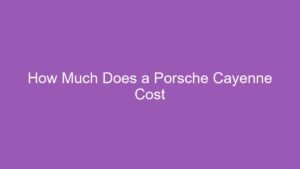
Contents
- How Much Is Car Insurance for a New Driver per Month? Your Ultimate Guide to Understanding Costs & Saving!
- Why Is Car Insurance So Expensive for New Drivers?
- What’s the Average Cost of Car Insurance for a New Driver per Month?
- Key Factors That Influence Your New Driver Insurance Rate
- Step-by-Step Guide to Finding Affordable Insurance for a New Driver
- Smart Tips to Lower Your Monthly Premium
- Common Mistakes New Drivers (and Their Parents) Make
- Conclusion
- FAQ
How Much Is Car Insurance for a New Driver per Month? Your Ultimate Guide to Understanding Costs & Saving!
Getting your driver’s license is a huge milestone – the freedom of the open road, the independence! But then comes the practical side: car insurance. For new drivers, especially teenagers, the cost of insurance can feel like a sudden, unwelcome reality check. It’s often significantly higher than for experienced drivers, leading to sticker shock and a lot of questions.
Let’s be honest: there’s no single, easy answer to “How much is insurance for a new driver per month?” The cost varies wildly based on many factors. But don’t worry! This friendly guide is here to break down why it’s so expensive, what you can expect to pay, and, most importantly, how you can potentially lower those monthly premiums.
Why Is Car Insurance So Expensive for New Drivers?
Insurance companies are all about risk. They analyze statistics to predict how likely a driver is to file a claim. Unfortunately, for new drivers, these statistics aren’t always favorable. Here’s why:
🛒 Recommended Product
- Lack of Experience: This is the biggest factor. New drivers simply haven’t spent enough time behind the wheel to develop the instincts and defensive driving skills of experienced motorists.
- Age (Especially Teenagers): Statistically, drivers under 25, particularly those between 16 and 19, are involved in more accidents than any other age group. Their lack of experience is compounded by other factors like risk-taking behavior and less developed judgment.
- No Driving History: Insurance companies don’t have a record of your safe driving habits (or lack thereof). Without a clean history to prove you’re responsible, they default to a higher risk assessment.
- Higher Likelihood of Serious Accidents: When young, inexperienced drivers do get into accidents, they are often more severe, leading to higher claims costs for injuries and vehicle damage.
What’s the Average Cost of Car Insurance for a New Driver per Month?
Now for the number crunch. It’s crucial to remember that these are just averages, and your actual cost could be higher or lower.
- For a Teen Driver (16-19 years old): You could be looking at anywhere from $200 to $500+ per month, and sometimes even higher, especially if they are getting their own policy. Adding a teen to an existing family policy is almost always cheaper.
- For an Older New Driver (25+ years old): If you’re an adult getting your license for the first time, your rates will likely be lower than a teenager’s, but still higher than an experienced driver your age. Expect something in the range of $100 to $300+ per month.
Key Takeaway: These are broad estimates. Your specific quote will depend heavily on the factors we discuss next.
Key Factors That Influence Your New Driver Insurance Rate
Understanding these factors can help you make informed decisions and potentially save money.
- Age and Gender: As mentioned, younger drivers (especially males, though this varies by state and insurer) typically pay more.
- Location: Where you live makes a big difference. Urban areas with higher traffic, accident rates, and vehicle theft often have higher premiums than rural areas. Even your specific zip code matters!
- Type of Vehicle: The car you drive significantly impacts your rate.
- Expensive, high-performance cars cost more to insure.
- Cars with high theft rates will also be more expensive.
- Cars with excellent safety ratings and features can sometimes lead to discounts.
- Older, less valuable cars might have lower comprehensive and collision costs, but still high liability.
- Coverage Levels and Deductibles:
- State Minimums: Every state requires a minimum amount of liability insurance. This is usually the cheapest option upfront but might leave you underinsured in a serious accident.
- Full Coverage: Adding collision and comprehensive coverage (which protects your car from damage, theft, and other non-collision events) will increase your premium, but is often required if you have a car loan.
- Deductible: This is the amount you pay out-of-pocket before your insurance kicks in. A higher deductible typically means a lower monthly premium, but you’ll pay more upfront if you make a claim.
- Credit Score (for adult new drivers): In many states, your credit-based insurance score (which is related to your credit score) can influence your premium. A good credit score often translates to lower rates.
- Academic Performance (for student new drivers): Many insurers offer a “Good Student Discount” for drivers who maintain a B average or higher.
- Driving Record (once established): While new drivers don’t have one initially, every ticket or accident you get in the future will significantly impact your rates.
Step-by-Step Guide to Finding Affordable Insurance for a New Driver
Don’t just accept the first quote you get! Being proactive and informed can save you a lot.
Step 1: Understand Your Coverage Needs
Before you even start getting quotes, figure out what kind of coverage you need.
* State Minimum Liability: This is the legal requirement. It covers damages to other vehicles and injuries to other people if you’re at fault in an accident. It does NOT cover damage to your own car or your own injuries.
* Collision Coverage: Pays for damage to your car if you hit another car, an object, or roll over.
* Comprehensive Coverage: Covers damage to your car from things like theft, vandalism, fire, natural disasters, or hitting an animal.
* Other Optional Coverages: Uninsured/Underinsured Motorist, Medical Payments, Personal Injury Protection (PIP), Roadside Assistance, Rental Car Reimbursement.
If you have a car loan or lease, you will almost certainly be required to carry full coverage (collision and comprehensive) in addition to liability.
Step 2: Gather All Necessary Information
When you’re ready to get quotes, have the following handy:
* Driver’s License number for the new driver.
* Vehicle Identification Number (VIN) for the car(s) you’ll be insuring.
* Make, model, year, and mileage of the vehicle(s).
* Proof of address.
* Academic transcripts if applying for a good student discount.
* Information about any driving courses completed (e.g., defensive driving).
🛒 Recommended Product
Step 3: Get Multiple Quotes (This is CRUCIAL!)
Do not settle for the first quote you receive. Insurance rates vary significantly between different companies, even for the exact same coverage.
* Contact several different insurance providers. Use their websites, call their agents, or use independent insurance brokers who can compare rates from multiple companies for you.
* Ensure you are comparing apples to apples. Get quotes for the exact same coverage limits, deductibles, and discounts to accurately compare prices.
Step 4: Explore All Available Discounts
Discounts are your best friend when you’re a new driver. Ask every insurer about every discount they offer. More on this below!
Step 5: Review Policies Carefully
Once you have a few competitive quotes, read the fine print.
* Understand what’s covered, what’s excluded, and your responsibilities.
* Ask questions if anything is unclear. It’s better to know upfront than to be surprised during a claim.
Step 6: Re-evaluate Periodically
Insurance rates can change. It’s a good idea to shop for new quotes at least once a year, or whenever your circumstances change (e.g., turning 25, completing a defensive driving course, improving your credit score).
Smart Tips to Lower Your Monthly Premium
Here are actionable strategies to bring down that monthly cost for a new driver:
- Add the New Driver to an Existing Family Policy: This is almost always the cheapest option for teen drivers. Adding them as an occasional or secondary driver to a parent’s policy is typically much less expensive than a standalone policy for a new driver.
- Look for a “Good Student” Discount: If the new driver is a student maintaining a B average (3.0 GPA) or higher, this discount can significantly reduce premiums. Most insurers offer it, so make sure to ask and provide proof.
- Complete a Driver’s Education or Defensive Driving Course: Many insurers offer discounts for new drivers who complete approved driver’s education courses or voluntary defensive driving programs. This demonstrates a commitment to safe driving.
- Choose the Right Car:
- Opt for a safe, reliable, and moderately priced vehicle. Cars with strong safety ratings, but without luxury features or high-performance engines, tend to be cheaper to insure.
- Avoid sports cars or vehicles with a high theft rate.
- Newer cars often have advanced safety features (like automatic emergency braking) that can sometimes lead to discounts.
- Increase Your Deductible: If you can comfortably afford to pay more out-of-pocket in the event of a claim, choosing a higher deductible (e.g., $1,000 instead of $500) will lower your monthly premium. Just make sure you have that deductible amount saved and accessible.
- Consider Usage-Based Insurance (Telematics Programs): Many insurers offer programs where they track your driving habits (speed, braking, mileage, time of day) via a device or smartphone app. Safe driving can earn you substantial discounts. This can be a game-changer for new drivers who want to prove they are responsible.
- Bundle Your Policies: If you have home, renter’s, or other insurance policies with the same company, bundling your auto insurance with them can often lead to a multi-policy discount.
- Pay Annually or Semi-Annually: If you can afford to pay your premium in full for six months or a year upfront, many insurers offer a discount compared to monthly payments.
- Maintain a Clean Driving Record: This is the most impactful long-term strategy. Avoiding tickets, accidents, and reckless driving will eventually lead to lower rates as you gain experience and prove your responsibility.
- Explore Low Mileage Discounts: If the new driver won’t be driving much (e.g., only to school and back), inquire about low mileage discounts.
Common Mistakes New Drivers (and Their Parents) Make
Avoid these pitfalls to save money and headaches:
- Not Shopping Around: This is the #1 mistake. Sticking with your current insurer without getting other quotes could cost you hundreds, if not thousands, of dollars annually.
- Only Getting State Minimum Coverage (and regretting it): While it’s tempting to go with the cheapest option, state minimums often provide very little protection. In a serious accident, you could be personally liable for tens of thousands of dollars in damages and medical bills.
- Forgetting to Ask About Discounts: Many discounts aren’t automatically applied. You have to ask for them and provide the necessary proof.
- Lying on an Application: Never, ever misrepresent information (e.g., stating the new driver lives at another address or doesn’t drive a certain car). This is insurance fraud, can lead to your policy being canceled, and may result in claims being denied.
- Choosing an Expensive-to-Insure Car: Before buying a car, get insurance quotes for it. A car that seems affordable to purchase might be a nightmare to insure for a new driver.
- Ignoring the Impact of a Clean Driving Record: A new driver might think minor tickets aren’t a big deal. However, even small infractions can cause rates to skyrocket and delay the time until rates decrease.
- Waiting Until the Last Minute: Don’t wait until the day you need insurance to start looking. Give yourself time to research, get multiple quotes, and make an informed decision without feeling rushed.
Conclusion
The cost of car insurance for a new driver per month can be a significant expense, but it’s an essential one. While the initial sticker shock is real, you have many options to manage and reduce these costs. By understanding the factors that influence your rates, actively shopping around, and taking advantage of every available discount, you can find a policy that fits your budget and provides the necessary protection.
🛒 Recommended Product
Remember, safe driving habits are your best long-term investment. Drive safely, stay informed, and enjoy the journey!
FAQ
Q. Why is insurance so expensive for new drivers per month?
A. Insurance companies view new drivers, especially young ones, as high-risk due to their lack of experience behind the wheel and statistically higher likelihood of being involved in accidents. This increased risk translates directly into higher premiums.
Q. What is the average monthly cost of car insurance for a new driver?
A. The average monthly cost can vary significantly, but new drivers often pay anywhere from $150 to $400 or even more per month, depending on age, location, type of vehicle, and coverage selected. Teenage drivers typically face the highest rates.
Q. How does a new driver’s age affect their monthly insurance premium?
A. Age is a primary factor. Drivers under 25, particularly teenagers, are considered the riskiest demographic by insurers and face the highest premiums. Rates generally decrease as a driver gains more experience and reaches their mid-20s, assuming they maintain a clean driving record.
Q. What type of car should a new driver consider to help lower monthly insurance costs?
A. New drivers should opt for cars that are less expensive to insure. This typically means vehicles with strong safety ratings, lower horsepower, and more affordable repair costs. Older, used sedans or SUVs known for reliability and safety features are often good choices, while sports cars or luxury vehicles will be much more expensive to insure.
Q. Can a new driver be added to a parent’s policy, and is it cheaper?
A. Yes, in most cases, it is significantly cheaper for a new driver to be added to a parent’s existing policy rather than getting their own separate policy. This allows them to benefit from the parent’s established driving history, multi-car discounts, and better rates.
Q. What discounts are available that could reduce a new driver’s monthly insurance cost?
A. Several discounts can help. Common ones include good student discounts (for maintaining a certain GPA), defensive driving course discounts, anti-theft device discounts, and multi-car discounts (if added to a family policy). Some insurers also offer discounts for telematics programs that monitor driving habits.
Q. Besides age and type of car, what other factors influence a new driver’s monthly insurance premium?
A. Other key factors include the new driver’s gender (females often pay slightly less than males in some states), the driver’s location (urban areas with higher accident or theft rates cost more), the chosen deductible amount, the level of coverage (liability vs. full coverage), and sometimes even their credit score (where permitted by law).
Related Articles
How Much Does a Tesla Cybertruck Cost
How Much Does a Tesla Cybertruck Cost? Your Ultimate Guide to Pricing & Purchase The Tesla Cybertruck has captured imaginations with its futuristi…
How Much Is a Tesla
How Much Is a Tesla? Unpacking the Cost of Your Dream EV Dreaming of driving a Tesla? You’re not alone! These innovative electric vehicles have …
Affiliate Disclosure: As an Amazon Associate, I earn from qualifying purchases made through links on this site.















